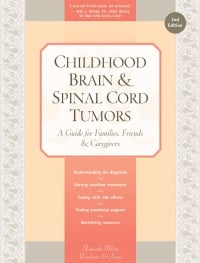Childhood Brain and Spinal Cord Tumors
Standard treatment
The standard treatment (or standard of care) for each type and stage of tumor is the treatment that has worked best for the most children up to that point in time. The current standards of care are the result of decades of clinical research studies. As researchers analyze the results from ongoing or completed clinical trials, they accumulate knowledge and make changes in standard treatments. In the 1990s, for example, most children with medulloblastoma received high doses of whole-brain radiation as standard care. Carefully controlled clinical trials later demonstrated that many children with medulloblastoma can be given a much lower dose than was used in the 1990s. Thus, the standard of care was changed.
To learn about the standard of care for your child’s type and stage of tumor, contact the National Cancer Institute’s (NCI) Physician’s Data Query (PDQ) by calling (800) 422-6237 (800-4-CANCER) or by going to the pediatric section of its website at www.cancer.gov/cancertopics/pdq/pediatrictreatment. PDQ provides information about pediatric brain and spinal cord tumors, state-of-the-art treatments, and ongoing clinical trials. Two versions are available online: one for patients and their families that uses simple language and contains no statistics, and one for professionals that is technical, thorough, and includes citations to the scientific literature.
The study that our institution was participating in at the time of my daughter’s diagnosis was attempting to lessen the treatment to reduce neurotoxicity yet still cure the disease. My family began a massive research effort on the issue, and we had several family friends who were physicians discuss the case with the heads of pediatric oncology at their institutions. The consensus was that since my daughter was at the high end of the high-risk description, it was advisable to choose the standard treatment, which was more aggressive than the proposed clinical trial.
Table of Contents
All Guides- Introduction
- 1. Diagnosis
- 2. The Brain and Spinal Cord
- 3. Types of Tumors
- 4. Telling Your Child and Others
- 5. Choosing a Treatment
- 6. Coping with Procedures
- 7. Forming a Partnership with the Treatment Team
- 8. Hospitalization
- 9. Venous Catheters
- 10. Surgery
- 11. Chemotherapy
- 12. Common Side Effects of Chemotherapy
- 13. Radiation Therapy
- 14. Peripheral Blood Stem Cell Transplantation
- 15. Siblings
- 16. Family and Friends
- 17. Communication and Behavior
- 18. School
- 19. Sources of Support
- 20. Nutrition
- 21. Medical and Financial Record-keeping
- 22. End of Treatment and Beyond
- 23. Recurrence
- 24. Death and Bereavement
- 25. Looking Forward
- Appendix A. Blood Tests and What They Mean
- Appendix C. Books and Websites

